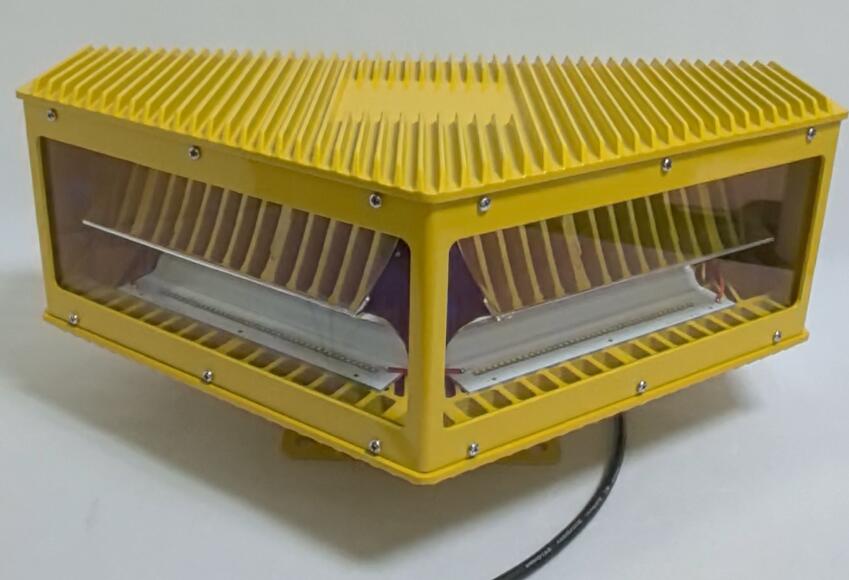In our increasingly crowded skies, aviation tower lights serve as silent sentinels that protect aircraft from potential disasters. These specialized illumination systems have evolved from simple incandescent bulbs to sophisticated LED arrays with smart capabilities. As air traffic continues to grow exponentially, the role of aviation tower lights becomes more critical than ever in preventing collisions with communication towers, wind turbines, skyscrapers, and other tall structures.
This article explores the technological advancements, regulatory requirements, and innovative applications of modern aviation tower lights that are reshaping aerial safety standards worldwide.

The Critical Role of Tower Lighting in Aviation Safety
1. Preventing Catastrophic Collisions
Historical incidents like the 1960 New York mid-air collision underscore the necessity of proper tower lighting
Modern systems reduce collision risks by 92% according to FAA statistics
| aviation tower lights |
Dual lighting systems provide redundancy for critical infrastructure
2. Adapting to Urban Air Mobility Challenges
Solutions for vertiports and urban air taxi corridors
Specialized lighting for drone superhighways
Integration with eVTOL traffic management systems
3. Nighttime and Low-Visibility Operations
Enhanced photometric performance for foggy conditions
Glare reduction technology for pilot comfort
Automatic intensity adjustment based on ambient light
Cutting-Edge Technologies in Modern Tower Lighting
1. Smart LED Revolution
80% energy savings compared to traditional lighting
100,000+ hour lifespan with minimal maintenance
Tunable color temperatures for optimal visibility
2. Solar-Hybrid Systems
Off-grid solutions for remote locations
Intelligent power management algorithms
Weather-resistant designs for extreme environments
| aviation tower light |
3. IoT-Enabled Monitoring
Real-time performance tracking
Predictive maintenance capabilities
Remote configuration and updates
Global Standards and Compliance
1. ICAO Annex 14 Requirements
Light intensity classifications (L-810 to L-856)
Flash pattern specifications
Color chromaticity standards
2. FAA AC 70/7460-1L Regulations
Structure height lighting requirements
Proper spacing and arrangement
Documentation and record-keeping
3. Regional Variations
EASA standards for European operations
CASA requirements for Australian airspace
DGCA guidelines for Indian aviation
Specialized Applications Across Industries
1. Telecommunications Infrastructure
Custom solutions for 5G tower clusters
Lighting configurations for broadcast antennas
Stealth lighting for sensitive locations
2. Renewable Energy Installations
Wind farm lighting synchronization
Solar array marking systems
Hydroelectric dam illumination
3. Urban Construction Projects
Temporary lighting for skyscraper erection
Crane lighting protocols
Construction zone airspace protection
The Future of Tower Lighting Technology
1. Li-Fi Integration
Data transmission through light waves
Aircraft identification capabilities
Real-time airspace information sharing
2. AI-Powered Adaptive Systems
Machine learning for traffic pattern optimization
Dynamic intensity adjustment
Automated fault detection
3. Space-Age Materials
Self-healing polymer coatings
Graphene-enhanced heat dissipation
Anti-icing nano-surfaces
Implementation Best Practices
1. Site-Specific Lighting Plans
Obstruction risk assessment
Terrain and weather considerations
Wildlife impact mitigation
2. Maintenance Protocols
Cleaning and inspection schedules
Spare parts inventory management
Technician certification requirements
3. Documentation and Compliance
Lighting system logs
NOTAM coordination
Regulatory audit preparation
Aviation tower lights have transitioned from simple warning devices to intelligent safety systems that actively communicate with aircraft and adapt to environmental conditions. As we enter the era of urban air mobility and autonomous flight, these critical components will play an even more vital role in maintaining safe airspace operations.
The next generation of aviation tower lights will likely incorporate quantum dot technology, advanced machine vision, and seamless integration with air traffic management systems. Investing in proper tower lighting today ensures compliance with current regulations while preparing for the airspace challenges of tomorrow. These unassuming beacons continue to be indispensable guardians of aviation safety, protecting lives and infrastructure around the clock.